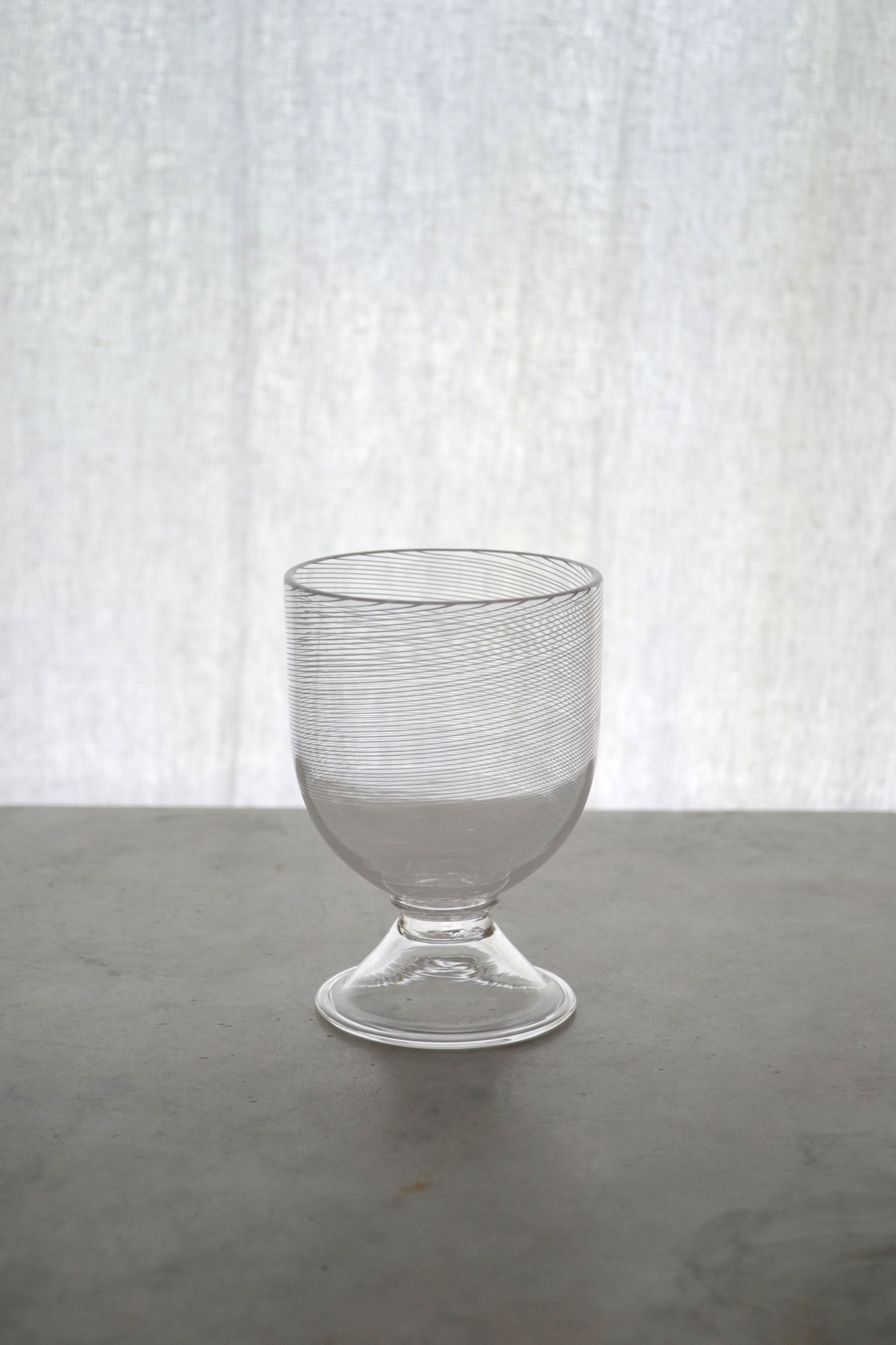Mezza Filigrana Footed Glass





Mezza Filigrana Footed Glass
Designed for the modern table, hand blown using a centuries-old technique.
Filigrana or filigree is a Venetian glass-making technique originating on the island of Murano. Canes of colored glass twist and turn creating intricate ribbon patterns. Mezza Filigrana or half filigree is perhaps the most basic form of the technique. Fine threads of color wind around the glass in a single delicate spiral pattern.
These glasses are entirely made by hand. No molds or machine processes are used. Slight variations in size, pattern, and texture, are indicative of the hand-blown process and tell the story of the glass itself and the hands that made them.
A white half filigree cup sits atop a flared clear glass foot. This is the perfect everything glass: wine, spritz(!), beer, water, iced tea. . . it’s exactly the size for a can of your favorite fizzy drink on ice.
Sold individually
Size is approximately 3.5”ø x 5”h (size will vary up to 0.5 inch from piece to piece)
Holds approximately 14 oz.
If you order multiples, I will do my best to select a set closest in size.
Blown glass is best washed by hand. Not for use with hot liquids.
Designed in Maine by Michelle Provencal (Thirdlee & Co.) and produced in Cambridge, Massachusetts by Vitricca Iannazzi.
First three images, photos, and styling @smalldoughco
INSPIRATION:
Inspired by the mid-century work of artist Dino Martens and his use of traditional Venetian techniques in modern pieces.
PROCESS:
Those beautiful white threads of glass are the result of a complicated process. The technique requires careful handling by skilled glass blowers. Chunks of raw white glass are heated and formed into a solid white rod which is then encased in clear glass. The rod of glass is then heated and pulled by two glass makers until it is approximately 50 feet in length and as thin as a No.2 pencil. After cooling, this delicate glass cane is broken down into smaller sections. Those sections are laid out side by side and heated into a thin sheet of glass. The hot sheet of striped glass is rolled into a tube which is then cooled and broken into smaller sections. Those sections are then heated, encased in clear glass, and then finally twisted before being blown into shape.
THE GLASSMAKER:
Based in Cambridge, MA. Andrew Iannazzi is a tradesman with a deep connection to the rich history of traditional Italian and European glassmaking and its relation to American design.
